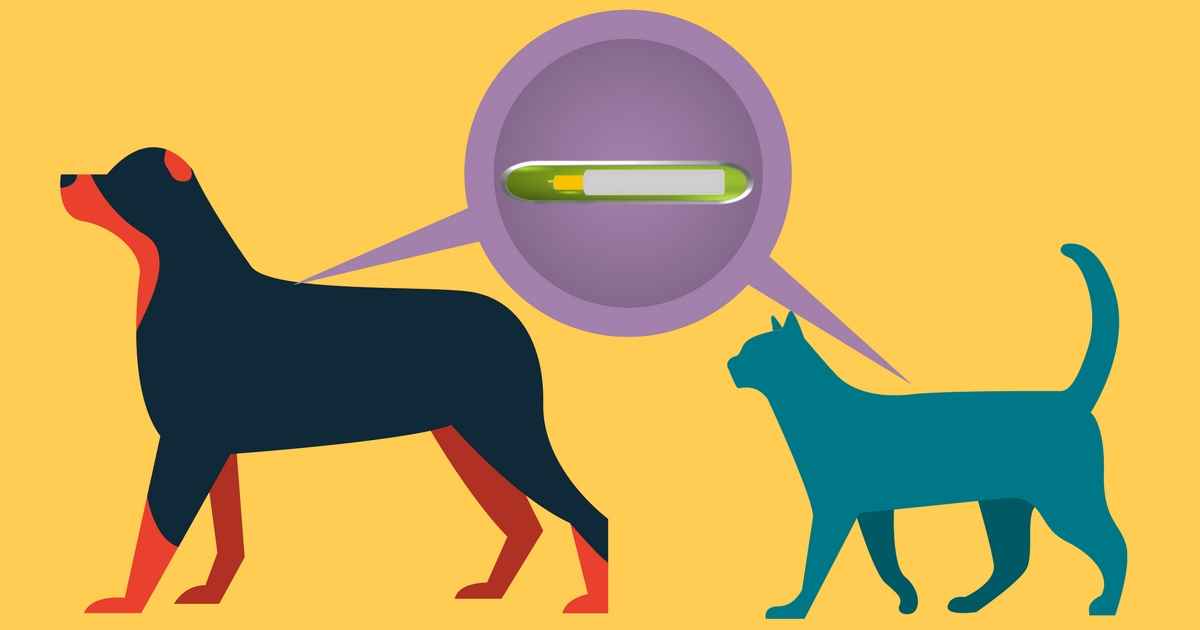Microchips are the best way to identify pets in a safe, secure, non-alterable way. New laws in South Australia require all dogs and cats to be microchipped by July 1, 2018.
Microchips alone aren’t enough to guarantee that a pet will find their way home. Please also visit our guides to When Microchips Don’t Work and What To Do When A Pet Is Lost so you can avoid some common problems.
What Is A Microchip?
A microchip is a small glass-coated electronic chip about the size of a rice grain injected under the skin. When scanned by a compatible reading device it produces a unique number that can be matched to identification details on a separate database.
Most microchips are inserted over the back, between the shoulder blades. In this position, they are less likely to migrate and are easy to read. Modern microchips are made to an international standard so that all animals can be scanned using the same technology worldwide.
How Do Microchips Work?
- A microchip’s number is read by a scanner passed over it
- The number is then looked up in a database and matched to the owner details
- The owner is then called
Microchipping is the simplest way to prove ownership of a pet. Council registration in Adelaide is a separate process and needs to be done from 3 months for all dogs, plus cats in the Mitcham council area.
Do Microchips Cause Any Pain?
Nearly every pet dog or cat now has a microchip and there are no known problems with their use. They are coated in a non-reactive glass and have no battery or moving parts to wear out, so tend to remain operational for life. Occasionally a microchip will move under the skin and be found down on the chest or the front leg but even here they are usually harmless, just a little hard to find.
How Are Microchips Inserted?
A microchip can be placed in a regular appointment at the vet. We do not charge an extra fee if there are no other issues to discuss. A nurse will hold your pet while you provide treats or pats and a vet will inject the chip between the shoulder blades. It is usually well-tolerated but occasionally we advise that a stressed pet may be better having it done under an anaesthetic or sedation.
Once this is done, the nurse will get you to fill out a form which we will then send to the registry. You will need to provide your contact details, plus the details of another person in case you are unavailable, and a password to change the details when needed.
Today, most puppies and kittens from breeders or shelters will already have had a microchip inserted before purchase. Please remember to ask for the paperwork when you collect your new pet and don’t forget to update the details.
Is A Tattoo Necessary?
No. Nowadays vets, councils or shelters will assume a pet has a microchip and will look for it even without a tattoo. In the past, microchips were unusual in pets, and scanners were expensive and uncommon. Therefore tattoos were necessary to make sure people who found lost pets would go to get the animal’s chip scanned.
How Do I Update My Pet’s Microchip?
The first thing to do is check which database your pet is registered with. You can do this by either finding their paperwork or visiting http://www.petaddress.com.au/ and entering your pet’s microchip number.
Then visit the linked registry to update the details. If you do not have a username and password follow the instructions to create a new one. If you do not have the microchip number, visit a vet to have your pet scanned at no charge.
When A Chip Isn’t Registered
If no result is found, these are the possibilities:
- A pet with NSW origins may only be registered via the separate NSW Companion Animal Registry https://www.petregistry.nsw.gov.au/
- Greyhounds may be registered via the Greyhound Registry
- The pet’s microchip may never have been registered
- The animal could have been imported to Australia; registration is national, not international
In all four cases, you will need to create and pay for a new registration.
Microchip Registry List
To register, you can use any of the five Australia wide databases. These are:
http://www.aar.org.au/
https://www.car.com.au/
http://www.petsafe.com.au/
https://www.homesafeid.com/
https://www.globalmicro.com.au/
Don’t forget to also check about any state-based database where you live. Here in South Australia, all dogs and cats also need to be registered at the DACO website. This is done automatically by SA breeders and sellers but you will need to keep the details up to date.
Updating A Microchip For A New Owner
If you don’t have access to the old owner’s email or log in details, you will probably need to sign a statutory declaration. This is a legal document which in this case will state that you are the new owner of pet XYZ. Penalties for lying in stat decs are severe to prevent fraud.
Times when this may happen include dumped dogs, infirm or deceased owners or loss of contact with the previous owner. If the old owner is still able to assist, you should be just able to log in and update the pet’s details the same as when you get a puppy from a breeder.

